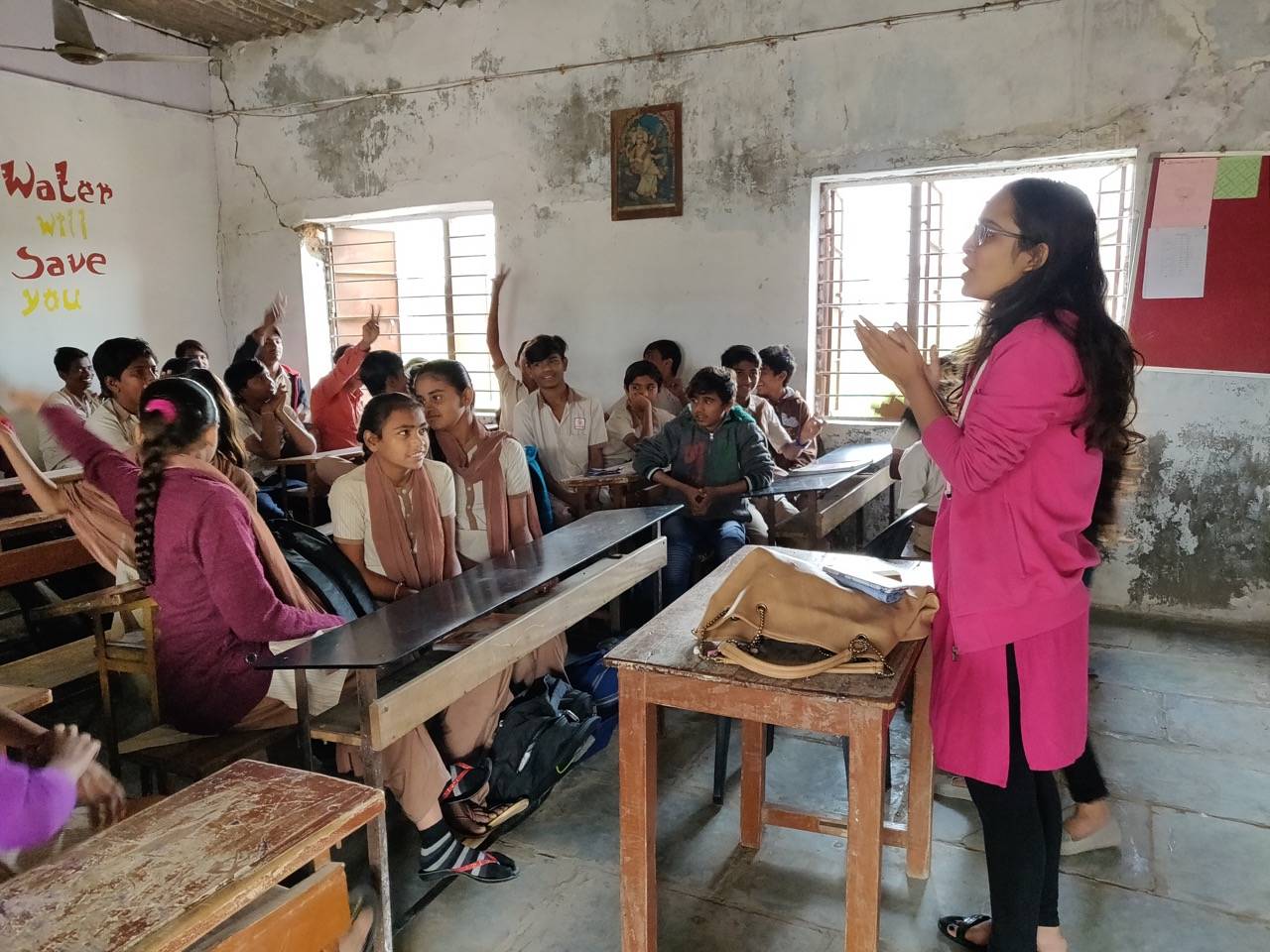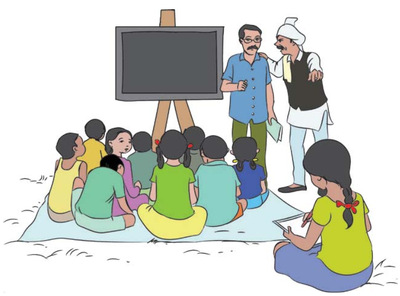This blog consists of a detailed overview of problems faced by the children of rural areas, I have covered a total of 8 major problems in this blog, I hope you like it.
Education in rural areas
 Education
is emerging as the daily need for everyone but, what exactly is education?
Education is not only memorizing, learning, reading, writing the examination,
etc. It is a way of experiencing something; it is the process of learning from
life. Sadly every student in our country is devoid of this
knowledge; they do not know what it actually means to be educated. They are not
alone to shift the blame on, the surrounding is equally responsible. The child
education faces a lot of problems with the upcoming generation, now everything
needs to be updated and should match the new trends. Since decades there have
been measures to fill the gap between rural and urban areas but each sector has
its own set of problems to deal with. Let us see the rural sector and the lacunas
in their child education system.
Education
is emerging as the daily need for everyone but, what exactly is education?
Education is not only memorizing, learning, reading, writing the examination,
etc. It is a way of experiencing something; it is the process of learning from
life. Sadly every student in our country is devoid of this
knowledge; they do not know what it actually means to be educated. They are not
alone to shift the blame on, the surrounding is equally responsible. The child
education faces a lot of problems with the upcoming generation, now everything
needs to be updated and should match the new trends. Since decades there have
been measures to fill the gap between rural and urban areas but each sector has
its own set of problems to deal with. Let us see the rural sector and the lacunas
in their child education system.What are rural areas?

First let me less you about
rural areas, what
exactly are these? Rural areas are basically agricultural areas they are not
towns or cities, they are often referred to as countryside places.
There are
a lot of amenities that are denied to the rural areas, for example, they have
limited routes, nonexistent public transport, more poverty, less literacy
rates, very little infrastructure, absence of good educational, recreational,
social and health benefits.
Problems with child education
The problems
of child education in rural areas can be well understood by the following
point.
1. Unavailability of good teachers
Availability of good teachers
is an alarming issue, all the good teachers in the rural areas have a complaint that the number of students is very less and they face difficulty in
generating a good amount, the qualified teachers end up going to an urban area
which provide them with many students and they generate a good amount. Poor students
end up with reluctant teachers who don’t pay much attention to the students.
2. Absence of teaching recourses
Teachers are not provided
with teaching aids, as a result, the children lose their attention and struggle
with certain concepts, the teaching aids help students to get a virtual idea
for a few concepts and makes the class interactive, most commonly used aids are geometrical
shapes, geometrical instruments, globe, maps and many more other.
3. Distance from the school
In most of the villages
schools are not present so, the students travel to other villages to complete
their education, sometimes the physical distance also becomes the reason that
most of the students don’t attend the school, Poor Indian families worry more
about their girl child and don’t send their girl to faraway places to study. Long the road journey is enough to change the mind of students and most of them bunk the
school and start wandering around.
4. Poverty at its peek
Most of the people are very poor and cannot afford to educate their child in a good school so they make them join any school that is present in the vicinity; there is a complete absence of parental concern in the studies, rather they expect their child to work in the fields instead than studying. This vacancy of the parental environment during the time of studies makes students reluctant toward studies
5. Lack of funds and infrastructure
The small schools of the
rural areas are not having a proper building to conduct classes instead of the
classes are held in the open ground with a small backboard, this all happens
because of lack of funds for the school, the students are often distracted in
the open ground and it becomes extremely hard for the children to avoid the
distraction. The duration of the classes is also a concern as they are very
short and the time of class dismiss depends on the teacher’s mood.
6. No reliable means of
communication
Unlike the students of urban areas, the students of rural areas are do not have any media to communicate with each other or with the teacher, no such term like “internet education” exist in the knowledge of children, this is the main reason why the students of the rural areas lack exposure to the real world. The students cannot clarify the doubt in an instant the only option they have is to wait till the next working day.
7. Feeling of separation
Most of the people who live
in rural areas have an inferiority complex with people of urban areas, most of
the students think they lack all the resources in the small town they live in
so they lose their will to study and engage themselves in the domestic works. They
think they won't be able to reach the level of someone living in the city from a
small village.
8. Discrimination and superstations
Some places in the rural areas where the schooling is good the bad vibes of the discrimination ruins it, many places in India some people think that only higher cast have rights to be educated and lower caste is denied basic educational facilities’, in most of the places the girls are not allowed to attend school and kept at home to carry out domestic services, the students are also discriminated based on colour and place of birth
As a
human being there is a lot we can do to stop these social evils let us not just
sit reading this article but also make other people aware of the problems. Because the united society is the best.







ReplyDeleteChildren in rural areas often face challenges accessing quality education, healthcare, and basic amenities. Limited infrastructure, lack of resources, and inadequate transportation can hinder their development. Initiatives like Schools in BTM Layout can bridge this gap, providing opportunities for better education and support.